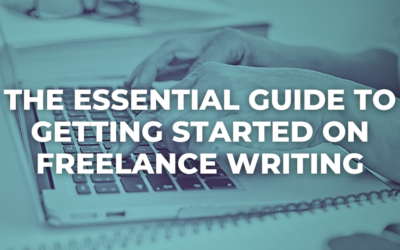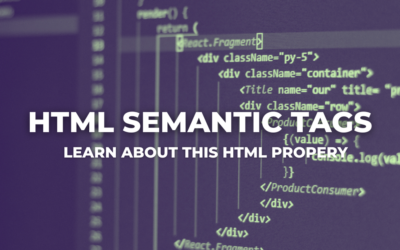We are happy to share with you the next in line of our series of interviews with design and web professionals, the goal is to provide some educational and informative insight into how people work, what inspires them and how they got where they are. This month we have Jeff Croft designer at Blue Flavor and author of his design and web standards blog jeffcroft.com.
 How or where do you find inspiration?
How or where do you find inspiration?
Everywhere. I know that’s not a very definitive answer, but it’s an accurate one. Most, I get inspired by people. Family, friends, co-workers, and especially my daughter. Sometimes I get inspired by other web design work, sometimes by other design work (architecture, packaging, fashion, etc.), sometimes by art (phtography, painting, music, etc.), and sometimes by things like nature and the city. It really just depends. I try to always have my “inspiration eyes†open.
Who is the biggest influence on your work right now?
The most directly influential individuals for me right now are probably the masters of the grid like Josef Müller-Brockmann, Jan Tschichold, Max Bill, and Emil Ruder. Along with those guys, I’d include Khoi Vinh, Mark Boulton, and a handful of others who have been actively working to apply these grid concepts to our new medium.
Also, I would cite two web designers I worked with at The Lawrence Journal-World, Wilson Miner and Nathan Borror, as very big influences.
Where are your “design roots� Print or Web?
Web. I have no formal design education. I got excited about the web back in the early ninties as a platform for personal publishing and communication. I started learning web design tools, but realized a few years later that use of tools is probably only 20% of a real designer’s skill set — so I set out to learn the other 80%. I’ve been reading every design book I can get my hands on ever since.
How important is it to know the history of design?
I don’t know. Some people are just born with the ability to design things that are elegant, functional, beautiful, and useful. Those people probably don’t need to spend a lot of time studying anything, because they just have a knack for it. For everyone else (including myself), learning about design history can certainly be a great help. In the end, all that matters is that you do great design wrk. Learning about design history is one of many things you can do to help yourself reach that end.
Serif or Sans?
Whichever is most appropriate for the project. Again, I know this isn’t a very definitive answer, but it’s almost always the right one, which it comes to design. As designers, our job is to help our clients solve problems and reach their goals. As such, we need to evaluate their project and make design decisions that make sense in that context — even if it doesn’t jive with our personal preferences. Someone making a typographical art piece can simply choose their favorite font. Someone doing design should be picking the most appropriate font — which is different in every situation.
Do you code and design? Are you a “Hybrid�
I am a “hybrid,†I suppose, although I consider myself a designer first, and that’s what I focus most of my attention on. I’ve become more of a hybrid in the past couple of years, as I’ve learned Python and Django. I’ve been adept at HTML and CSS for many years, but I only recently have started doing a lot of “real†programming. It’s a fun tangent sometimes, but I think I’ll always prefer design to code.
What’s your favorite part of the creative process?
Working with people. I actually like meetings. I like interaction. I like discussions. I like collaborating to solve problems. It’s one of the reasons I’ve always been part of a team and have done relatively little freelance work.
What makes your creative process different from everybody else?
I don’t know if anything makes it that different from everybody else. I’m sure there are a lot of people that work much the same as I do. A few things that are unusual, I guess, are that I don’t really draw and I generally don’t listen to music while I work. I’ve never really been a sketcher — I’ll sometimes quickly thumbnail out layouts, but that’s about it. I don’t have a sketchbook full of amazing iterations like Jason Santa Maria does. I wish I did, but I just simply don’t draw that well. I’m a very active listener to music. It’s probably because I studied music theory in college, but I have a very hard time listening to music passively. I can’t put it in the background. When music is on, I’m automatically figuring out the chord progressions, analyzing the time signature, and transcribing the melody in my head. I can’t help it. Because of that, music tends to be a major distraction when I’m working.
What do you see as the single biggest shift in the evolution of design over the past 5 years?
I think both clients and agencies are starting to realize the value in strategic, non-tactile design. Whereas clients used to come to agiences saying things like, “we need you to make us three 30-second TV spots,†they now come and say, “we need you to help us re-imagine our brand image in a way that will capture the minds of a younger audience.†They’re starting to involve designers in every phase of their business, thinking of us as consultants who can help streamline and focus their entire organization, rather than simply “people who make things.â€
What’s the difference between User Experience and User Interface design?
I’m not sure there is a difference. I would probably use those terms interchangeably. If there is a difference, it may be that User Experience is more all-encompassing. Whereas User Interface specifically refers to the way a user interacts with a system (a web site or application, in this case), User Experience could refer to the entire experience the user has. Maybe User Iterface design is a subset of User Experience design. Maybe.
Honestly, I don’t know. Is this a test? 🙂
What makes one a web design professional?
Well, in one definition of “professional,†it’s one who gets paid for web design services. In the case that “professional†refers to a certain degree of expertise, class, and experience, I would say that a web design professional is:
1. Someone who is a designer. This may seem obvious, but there are tons of front-end developers (people who knows HTML, CSS, and JavaScript really well) who call themselves designers, but don’t know the first thing about design.
2. Someone who understands that knowing software packages and languages is only a very small subset of their skillset. Sorry, but learning to use Dreamweaver doesn’t make you a designer. Learning to hand-code HTML and CSS doesn’t make you a designer, either.
3. Someone who believes in helping their clients and the users of their web sites moreso than they believe in semantically correct HTML and unobtrusive JavaScript.
4. Someone who is passionate about keeping up with what’s going on in the industry and is constantly learning.
What are designers/developers doing right (or wrong) in the web 2.0 world?
What designers are doing right in the Web 2.0 world is focusing on the user. They’re building places where users can connect with one another, have fun, share information, and do great things together. They’re realizing that if they build a place users want to visit, making money will follow easily. They’re realizing that if they, instead, focus on building a place that will make them money, users probably won’t want to visit.
What they’re doing wrong is thinking that they way to achieve the success some so-called Web 2.0 sites have is to use the same tools as them. Some great sites showed up that were built on Rails, so now everyone’s building on Rails. Some great sites showed up that were built using AJAX, so now everyone is trying to include AJAX. These sites were not great because of the tools they used — they were great because of the ideas behind them. If you have a great idea, it doesn’t matter what tools you use. Rails is great, but Basecamp would be just as awesome if it was built in PHP.
What’s your favorite flavor of design or development programs/languages?
For design, I am pretty much a one-trick pony: I use Photoshop almost exclusively. I use a bit of Illustrator when I’m doing logo work, and I do a bit of Flash here and there, but it’s mostly Photoshop. As for languages, I prefer Python (and the Django framework) for backend development. I use TextMate on a Mac for all my code, from (X)HTML to CSS to JavaScript to Python.
However, I am a nazi about none of these tools. Just because I prefer Python doesn’t mean Ruby isn’t great (it is). Just because I use CSS for most of my web design doesn’t mean Flash isn’t great (it is). Just because I use TextMate doesn’t mean you can’t build a great website with Dreamweaver, or dare I say it, FrontPage (you can).
Tools do not a designer make.
What is your favorite book?
Miles. It’s Miles Davis’ autobiography.
What is your favorite movie?
Man, I don’t know if I can pick just one. Chasing Amy. American Beauty. Lost in Translation. Pulp Fiction. The Big Lebowoski. Good Will Hunting.
Who is your favorite musical artist (or What musical artist are you listening to the most right now?)
I’ve been listening to Common a lot lately.
Jeff Croft is a web and graphic designer focused on web standards-based development. He currently lives and works in Seattle, WA. As a designer at Blue Flavor, he works on a wide variety of web and mobile projects.
Jeff has been working full-time on the web since 1995. In addition to his work with Blue Flavor, he was the senior web designer at the award-winning Lawrence Journal-World, home of Django and Ellington. He’s also worked at two major Universities in an effort to bring web standards to the education sector, and completed many freelance and contract jobs for varying clients.




Thanks very much for the interview! It’s always interesting to know how other designers think and work. For example, I also use Photoshop, but I complement it with InDesign and Illustrator. I also sometimes use Mac’s software. Dreamweaver is great! We work in team so we very often use Wrike http://www.wrike.com as a tool collaboration and project tracking.
Perfect interview! Thank you for that. I absolutely agree with Jeff’s opinions.
Great interview, much appreciated.